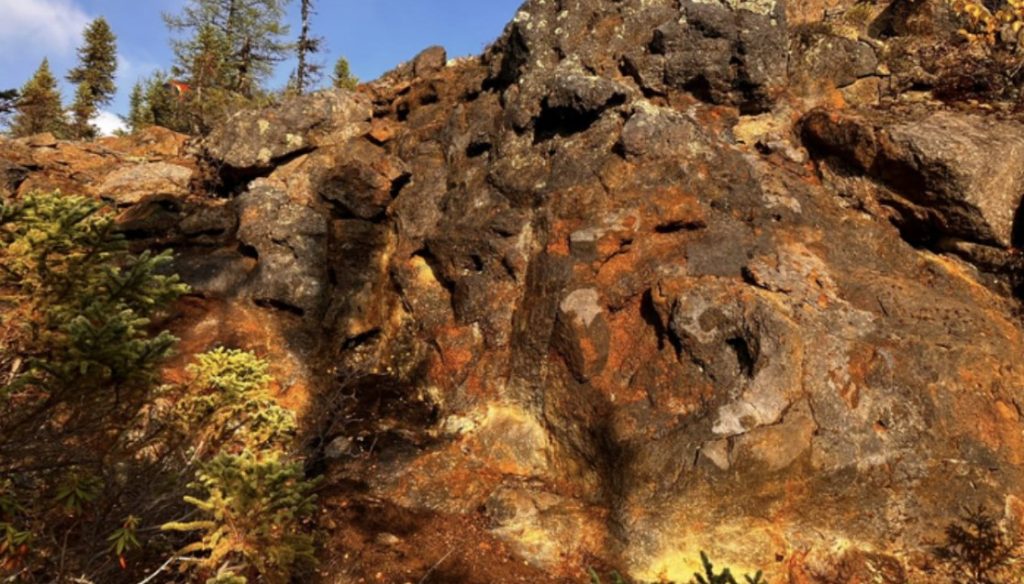Gama Explorations samples up to 0.75% nickel and 0.81% copper in new nickel-copper zones at Tyee Project, Quebec

Gama Explorations Inc. [CSE-GAMA; OTCQB-GMMAF; FSE-N79] reported the discovery of four nickel-copper sulphide occurrences via groundwork on the 100%-owned, 625 km2 Tyee Critical Metals Project in northeastern Quebec This discovery is in addition to Gama’s recent discovery of eight titanium-vanadium-scandium zones that were announced January 9, 2024.
Highlights: Four new nickel sulphide occurrences were discovered during Gama’s inaugural ground program with associated copper and cobalt grading up to 0.75% Ni, 0.81% Cu, and 0.14% Co.
The largest occurrence by sampling extent is 367m in length with a larger underlying geophysical anomaly. The Little St. Catherines Target is ideally located being only 15 km away from the Romaine IV hydroelectric dam and a government-maintained road.
These results, combined with the eight new titanium-vanadium-scandium zones announced earlier this month, place the company on solid footing with multiple high-value drill targets for its fully-funded spring 2024 program
“Our first year of exploration on the Tyee project yielded four nickel sulphide occurrences with a sizeable geophysical signature,” stated Dr. Jaap Verbaas, interim CEO. “These occurrences are only 15 km away from the Romaine IV hydroelectric dam and the government-maintained road leading to it. In only one season of exploration, Gama has discovered four zones of nickel-copper sulphides and eight zones of titanium-vanadium-scandium oxides. We are now planning a comprehensive exploration plan to further explore all the new occurrences on the project which will include ground geophysics and drilling. The Company is fully funded for 2024 and primed for the first drill program ever on the Tyee project. We expect to finalize the drill plan in the coming weeks.”
The Little St. Catherines target is comprised of a cluster of EM anomalies, of which four are associated with nickel and copper sulphides grading up to 0.75% Ni, 0.81% Cu, and 0.14% Co. The sample at target LC4 had the highest grade and total amount of combined base metals. Only one sample was collected at LC4 due to the scarcity of outcrop. The largest occurrence by sampling extent is target LC1 and is 367m in length with samples of up to 0.71% Ni and 0.56% Cu and overlies a geophysical anomaly of 550m in extent. The EM anomalies that underlie the mineralization across the Little St. Catherine’s targets range in size from less than 200m to over 1,000m.
The LC1, LC3 and LC4 targets all yielded considerable base metal grades. Although the other targets also yielded anomalous grades, it is still unclear whether the source of the conductors of these targets has been located. Thin overburden over the majority of the area precludes detailed sampling. Geophysically, the unmineralized conductors appear similar to the mineralized conductors, indicating that more work is required at these targets.
The HSP Complex is an intrusive suite of rocks to the north of Havre St. Pierre, Quebec. The complex contains the Lac Tio titanium mine, the largest solid ilmenite deposit in the world, owned by Rio Tinto. Nickel sulphide occurrences were initially discovered in the northernmost part of the HSP Complex in the nineties. The first comprehensive exploration program at Tyee in 2023 led to the discovery of several nickel and copper and numerous titanium occurrences.
Gama owns 100% of the Tyee Critical Metals Project located in northeastern Quebec. The company further has the right to acquire 100% interest in the Muskox Lithium Pegmatite Project located within the Yellowknife Pegmatite Province in the Northwest Territories.
